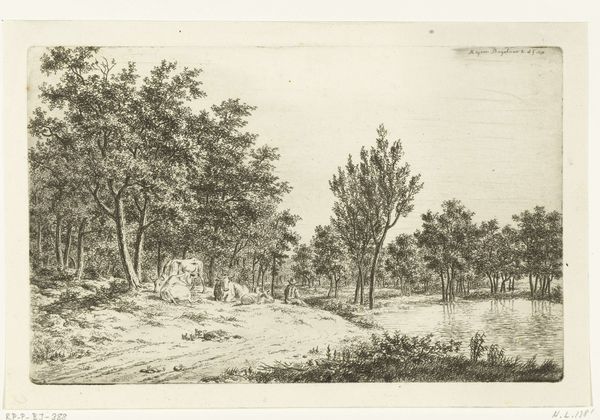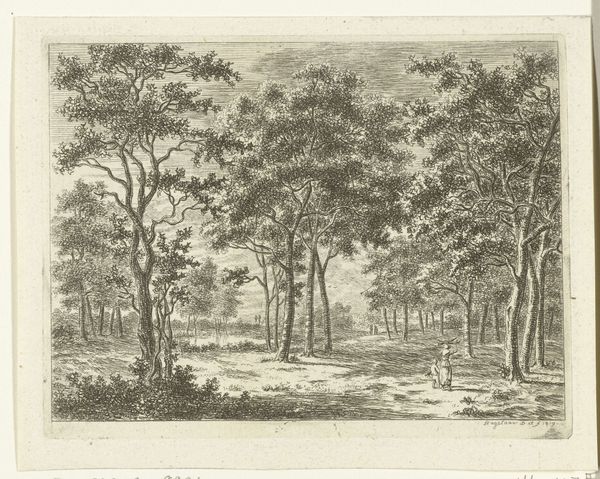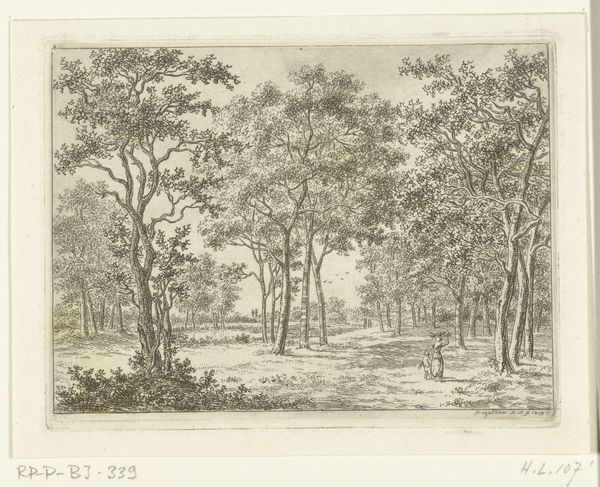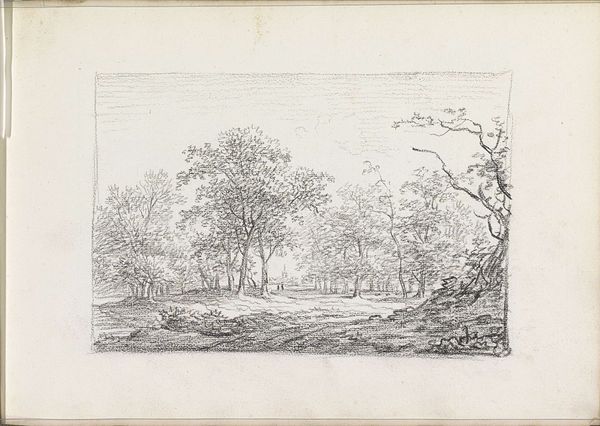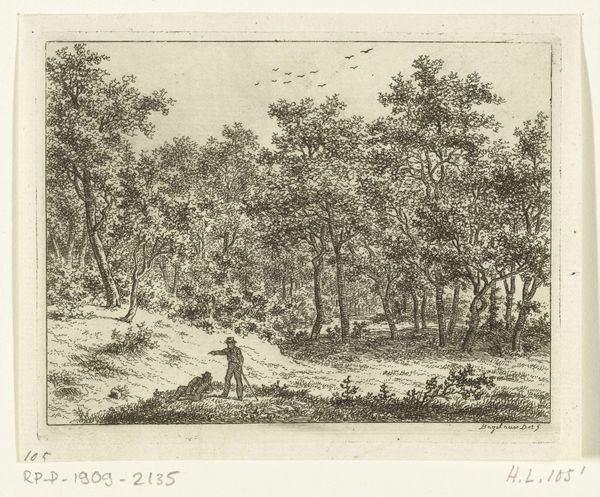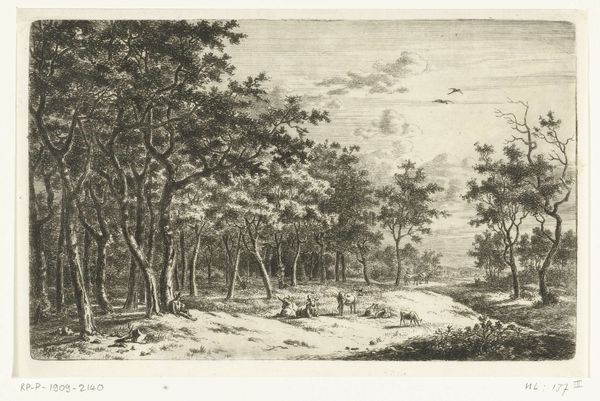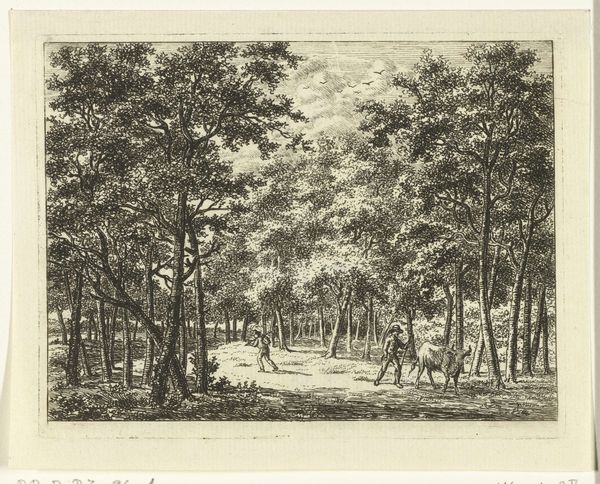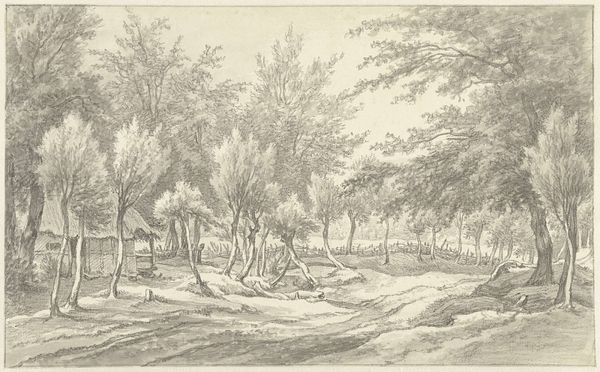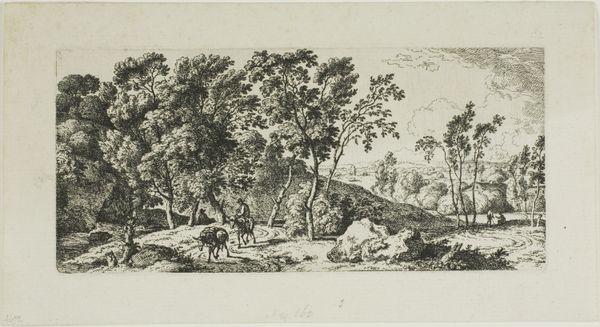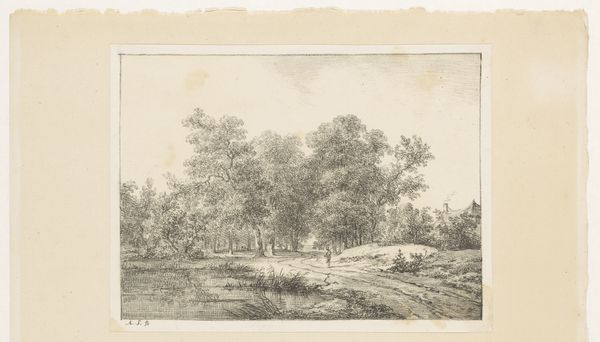
Landschap met een herder en zijn kudde aan de rand van het bos 1798 - 1821
0:00
0:00
drawing, paper, ink
#
drawing
#
landscape
#
paper
#
ink
#
romanticism
#
genre-painting
Dimensions: height 139 mm, width 222 mm
Copyright: Rijks Museum: Open Domain
Curator: This drawing pulls you in, doesn’t it? The delicacy of the lines creates such a quiet atmosphere. Editor: It does. A very pastoral scene, isn’t it? A bit idealized. Look at the trees, almost shimmering in the light. Everything seems quite still and peaceful. Curator: Well, let's look at the artwork details. This is "Landscape with a Shepherd and His Flock at the Edge of the Forest," attributed to Ernst Willem Jan Bagelaar, created sometime between 1798 and 1821. It’s a drawing in ink on paper. You called it pastoral – it does capture a yearning for simpler times, aligning with the romanticism movement's appreciation for nature. Editor: Precisely. Romanticism really re-packaged nature for urban consumption. Notice how carefully arranged the figures are – the shepherd lounging just so, the cows neatly placed as if for aesthetic consumption, and not as laborers in the field? It lacks the grime and grit of real rural existence. Curator: Absolutely. There's a strong element of control, isn't there? Bagelaar’s strategic placement of figures in the composition invites contemplation. The trees act as both frame and pathway, inviting our eye deeper into the landscape and it directs our attention toward the shepherd, connecting nature with a sense of human presence. It speaks volumes about humanity's connection with and dominion over the natural world at that time. Editor: Dominion perhaps more than connection, given the historical context of land enclosure and resource exploitation. Works like these often masked those tensions, providing an escape from the harsh realities faced by many. Curator: But that escape is valuable too, isn’t it? To offer an idealized vision—it reminds us of our capacity for longing and imagining better states of being. It carries this longing into our contemporary experience. The image still manages to exude an enchanting vision, regardless of how complicated we read it to be now. Editor: True, the image maintains a strong sense of invitation and calm. And it makes you question the stories behind these scenes, whether fictional or idealized representations. It reveals how society's values and aesthetics are woven into landscapes both artistic and real. Curator: Thinking about it like that reveals a powerful psychological connection for viewers over centuries. Editor: Yes, Bagelaar's pastoral scene serves as an example of landscape’s potential to express intricate aspects of human experience, even when concealed within serenity.
Comments
No comments
Be the first to comment and join the conversation on the ultimate creative platform.
